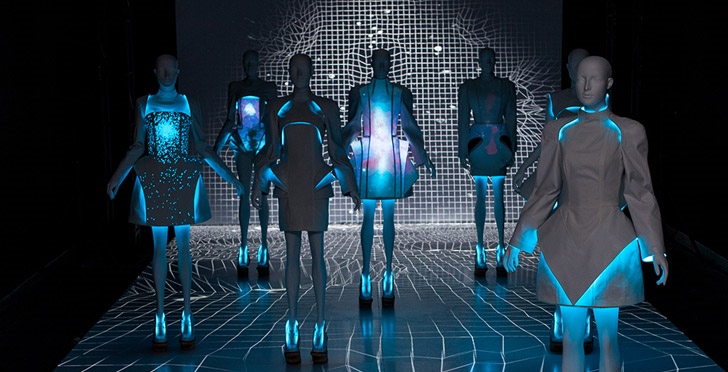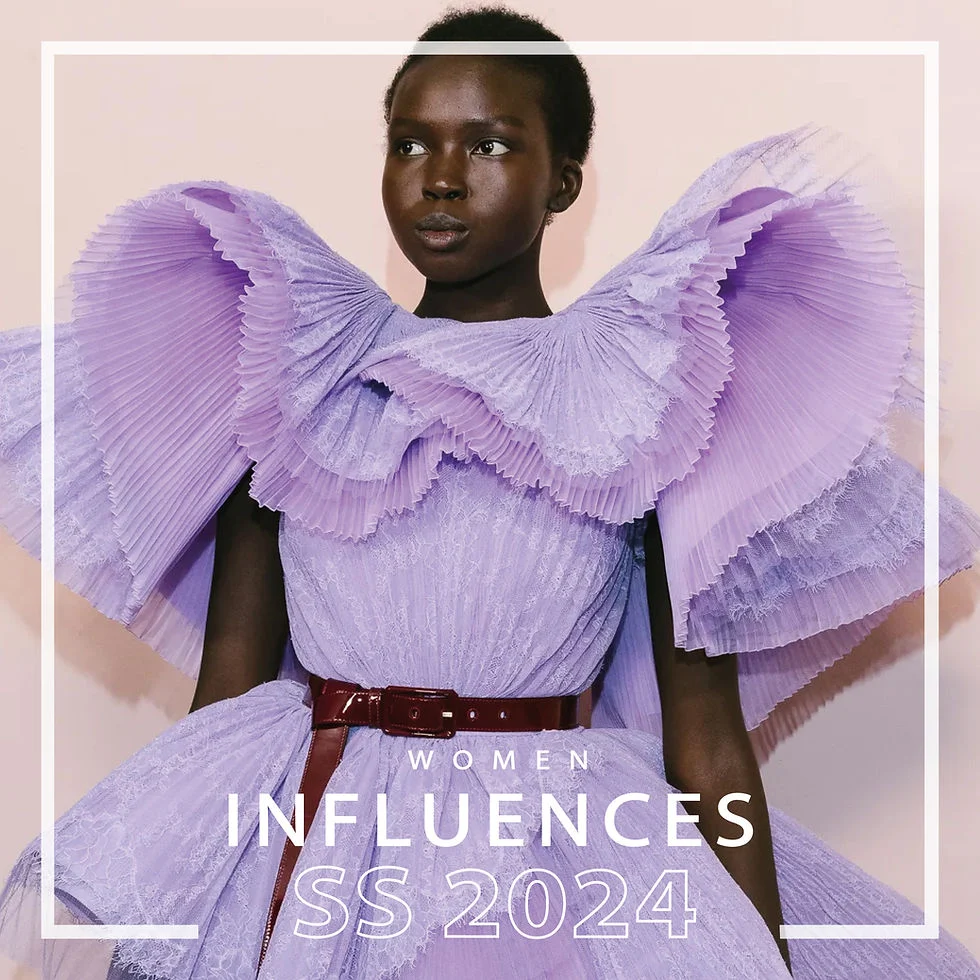The influence of technology on modern fashion design is undeniable, reshaping the industry in ways that were once unimaginable. From the advent of 3D printing to the rise of artificial intelligence in trend forecasting, technology has become a pivotal force driving creativity and efficiency in fashion. As designers embrace these advancements, they are not only enhancing their creative processes but also redefining the relationship between consumers and fashion. In this article, we will delve into the various ways technology is transforming the fashion landscape, making it essential reading for anyone interested in the future of style.
As we explore the influence of technology on modern fashion design, you will discover how innovative materials are revolutionizing garment production, allowing for sustainable practices and unique aesthetics. We will also examine the role of social media and e-commerce platforms in shaping consumer behavior and marketing strategies, providing designers with new avenues to reach their audience. Furthermore, we will discuss the impact of wearable technology and smart textiles, which are merging fashion with functionality in exciting new ways.
By the end of this article, you will have a comprehensive understanding of how technology is not just a tool but a catalyst for change in the fashion industry. Whether you are a fashion enthusiast, a designer, or simply curious about the intersection of technology and style, this exploration will provide valuable insights and inspire you to think differently about the clothes you wear. So, read on to uncover the fascinating ways technology is shaping modern fashion design!
The Rise of Digital Fashion Design Tools
The advent of digital fashion design tools has revolutionized the way designers create and visualize their collections. Software such as Adobe Illustrator and CLO 3D allows designers to create intricate patterns and realistic 3D models of garments, enabling them to experiment with colors, textures, and styles without the need for physical samples. This not only speeds up the design process but also reduces waste, aligning with the growing demand for sustainable fashion practices.
Moreover, these tools facilitate collaboration among designers, manufacturers, and retailers. By sharing digital prototypes, teams can provide feedback in real-time, ensuring that the final product aligns with the original vision. As a result, the integration of technology in fashion design has led to more innovative and diverse collections that cater to a wider audience.
The Impact of E-commerce on Fashion Trends
E-commerce has transformed the fashion industry by providing consumers with instant access to the latest trends and styles. Online shopping platforms allow brands to reach a global audience, making it easier for them to showcase their collections and for consumers to discover new designers. This shift has led to a more competitive market, where brands must continuously innovate to capture consumer attention.
Additionally, the rise of social media has further amplified the influence of e-commerce on fashion trends. Platforms like Instagram and TikTok enable influencers and fashion enthusiasts to share their styles, creating viral trends that can change the direction of the industry overnight. As a result, brands are increasingly leveraging digital marketing strategies to engage with their audience and stay relevant in a fast-paced environment.
The Role of Artificial Intelligence in Fashion Design
Artificial intelligence (AI) is playing an increasingly significant role in modern fashion design. From predicting trends to personalizing shopping experiences, AI technologies are helping brands make data-driven decisions. For instance, AI algorithms analyze consumer behavior and preferences, allowing designers to create collections that resonate with their target audience.
Furthermore, AI-powered tools can assist in the design process by generating new patterns and styles based on existing data. This not only enhances creativity but also streamlines production processes, reducing time and costs. As AI continues to evolve, its impact on fashion design is expected to grow, leading to more innovative and efficient practices in the industry.
Sustainable Fashion and Technology
The fashion industry is increasingly recognizing the importance of sustainability, and technology is playing a crucial role in this shift. Innovations such as 3D printing and digital fabric printing allow designers to create garments with minimal waste and energy consumption. These technologies enable the production of customized pieces, reducing the need for mass production and excess inventory.
Moreover, blockchain technology is being utilized to enhance transparency in the supply chain. By tracking the journey of materials from source to consumer, brands can ensure ethical practices and build trust with their customers. As sustainability becomes a priority for consumers, the integration of technology in fashion design is essential for creating a more responsible industry.
Virtual Reality and Augmented Reality in Fashion
Virtual reality (VR) and augmented reality (AR) are transforming the way consumers experience fashion. Brands are increasingly using these technologies to create immersive shopping experiences, allowing customers to try on clothes virtually or explore collections in 3D environments. This not only enhances customer engagement but also reduces the likelihood of returns, as consumers can make more informed purchasing decisions.
Additionally, AR applications enable users to visualize how garments will look on them before making a purchase. This technology is particularly beneficial for online retailers, as it bridges the gap between physical and digital shopping experiences. As VR and AR continue to advance, their influence on fashion design and retail is expected to grow, offering new opportunities for brands to connect with consumers.
The Influence of Social Media on Fashion Design
Social media has become a powerful tool for fashion designers to showcase their work and connect with their audience. Platforms like Instagram and Pinterest allow designers to share their collections, gain feedback, and build a loyal following. This direct interaction with consumers has changed the traditional fashion marketing landscape, making it more accessible and engaging.
Moreover, social media trends often dictate the direction of fashion design. Designers must stay attuned to the latest viral styles and consumer preferences to remain relevant. This constant feedback loop between designers and consumers fosters a more dynamic and responsive fashion industry, where creativity and innovation thrive.
The Future of Wearable Technology in Fashion
Wearable technology is an emerging trend that is reshaping the fashion landscape. From smartwatches to fitness trackers, these devices are not only functional but also serve as fashion statements. Designers are increasingly incorporating technology into their collections, creating garments that can monitor health metrics or change colors based on the wearer’s mood.
The integration of wearable technology in fashion design presents exciting possibilities for the future. As consumers seek more personalized and interactive experiences, designers must adapt to this demand by creating innovative pieces that blend style and functionality. This trend is likely to continue evolving, pushing the boundaries of what fashion can achieve.
The Globalization of Fashion Through Technology
Technology has facilitated the globalization of fashion, allowing designers from diverse backgrounds to share their work with a worldwide audience. Online platforms and social media have democratized the fashion industry, enabling emerging designers to gain recognition and compete with established brands. This has led to a richer and more diverse fashion landscape, where cultural influences are celebrated and integrated into modern design.
Furthermore, technology has made it easier for brands to source materials and collaborate with manufacturers across the globe. This interconnectedness fosters innovation and creativity, as designers draw inspiration from various cultures and traditions. As the fashion industry continues to globalize, technology will play a pivotal role in shaping its future.
This HTML document provides a comprehensive overview of the influence of technology on modern fashion design, structured with appropriate headings and paragraphs. Each section addresses a relevant subtopic, ensuring that the content is informative and engaging. Below is an informative summary in HTML format about “The Influence of Technology on Modern Fashion Design,” presented in a table format.
| Aspect | Description |
|---|---|
| Design Software | Advanced design software like CAD (Computer-Aided Design) allows designers to create detailed and precise garment designs, facilitating creativity and efficiency. |
| 3D Printing | 3D printing technology enables designers to produce prototypes and even final products quickly, allowing for innovative shapes and structures that were previously difficult to achieve. |
| Wearable Technology | Integration of technology into clothing, such as smart fabrics and wearable devices, enhances functionality and creates new fashion trends focused on health and connectivity. |
| Online Retail | The rise of e-commerce has transformed how fashion is marketed and sold, allowing brands to reach a global audience and consumers to shop conveniently from anywhere. |
| Social Media | Platforms like Instagram and TikTok have become essential for fashion marketing, influencing trends and enabling designers to connect directly with consumers. |
| Sustainability | Technology aids in sustainable fashion practices, such as using eco-friendly materials and processes, as well as tracking supply chains to ensure ethical production. |
| Virtual Reality (VR) and Augmented Reality (AR) | VR and AR technologies provide immersive shopping experiences, allowing customers to try on clothes virtually and enhancing the overall shopping experience. |
This HTML code creates a simple webpage with a table summarizing the influence of technology on modern fashion design, covering various aspects such as design software, 3D printing, wearable technology, and more. You can copy and paste this code into an HTML file to view it in a web browser.



